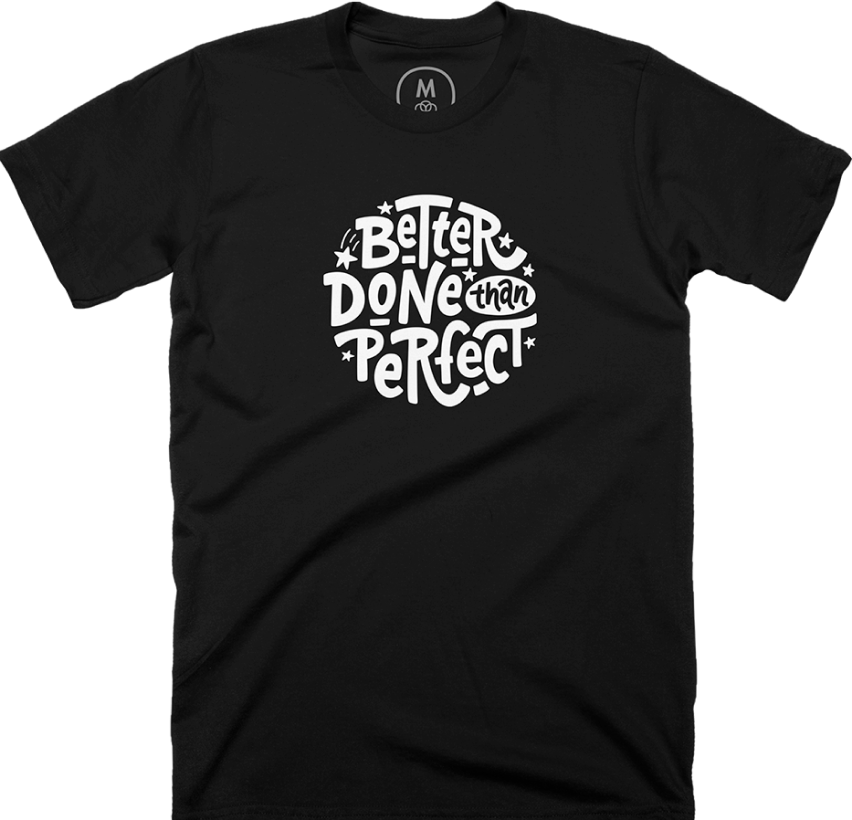Tim started his journey in email when he worked at a cruise-only travel agency after college:
“They handed me their email campaign. But I’d never even seen HTML prior to that experience, so I had to teach myself how to code email, code HTML, and then code email from there. This was a time before Litmus, responsive coding, and other standard email tools.”
He then went on to work at a law firm, a digital agency, a medical association, and now Response Labs.
Response Labs is a digital CRM agency that focuses on Salesforce for several Fortune 100 and 200 clients across the United States.
Re-engagement emails are a must
Re-engagement emails are a must have for any email list. Simply because it’s more expensive to acquire new customers than it is to maintain current ones:
“Unfortunately, everyone likes seeing that new sale as opposed to that repeat sale or that next sale from their existing client. It’s a huge avenue for revenue and ‘brand touchy-feely goodness.’
If you’re taking care of both new and current customers, people are aware of that. People will be very vocal about how awesome it is that they’re being taken care of even after the purchase.”
Knowing when someone’s up for re-engagement
Who should receive these engagement emails?
Tim says this should be based on their engagement with your product/service and communications:
“Be aware when a chunk of customers are falling off that engagement. Especially your regular communications such as company newsletters and product update announcements.”
And if you notice that people are falling off, this is a good indicator to start that conversation through:
- Re-engagement campaign
- Multiple touch sequence automation
- Send a check-in email
“That means they are no longer consuming the things you’re putting out and are maybe looking for alternative products/services.”
Measuring engagement
Because of privacy regulations and email clients blocking opens, email open rates have become a tertiary metric, unlike in previous years:
“I’m not sure I would say open rates have become obsolete, but they’ve definitely been made as a tertiary statistic to focus on with all the privacy regulations. And that’s great because subscribers get to decide when they engage and how they can be tracked.”
So instead of focusing on open rates, you want to look at metrics like:
- Clicks
- Landing page conversions
- Social media engagement
“For example, when your clicks go down over a segment of your population, you want to see if you can bump those stats back up.”
Focus on clicks
At Response Labs, they don’t put a lot of content in the email because you only have 8 seconds of the user’s attention, making it a very limited interaction:
“Whereas on your website, it could be much more dynamic and more robust. You can do more personalized experiences on the website compared to email.
So I would actually recommend getting away from that inline content piece because even if you have something as simple as a product upgrade, that’s still something worth looking at. Or you send them to a landing page with a video.”
This way, you’re able to track clicks and engagement. But without this information, you’ll rely on email opens and other tracking pixels to measure engagement.
“You’re probably going to be moving away from those, especially because GMail has talked about limiting the opens and tracking some of that activity.
I think clicks are definitely becoming the number one statistic and people should start focusing on getting their subscribers to clicks as opens become more unreliable.”
Determining an inactive user engagement
What condition(s) can you use to tell that a user segment is up for a re-engagement reactivation campaign?
Tim says that this boils back to:
- Your metrics
- Your ability to track those metrics
- The history of that segment
“Most ESPs have the ability to look back at those statistics. For example, you can look at people who haven’t clicked in 30 days or haven’t done a specific activity during this time frame.”
And even if you’re a young company with a young subscriber base, you have to continuously monitor when your subscribers will start to disengage:
“You need to make sure that you’re constantly looking at the past 10, 15, and 30-day increments for your users. Because even if you hit them last month, they may start falling off a month later because they might feel like they already know your product and they’re using it. So they think they don’t need any more information and they will start dropping off.”
The ideal structure of a re-engagement campaign
When it comes to re-engagement campaigns, more touches are better than one:
“For me, a three-touch campaign is ideal because it gives you the ability to have a conversation with those subscribers.”
The three-touch campaign could look like this:
- 1st email: Latest blog posts, product updates, or anything the subscriber might have missed.
- 2nd email: “We noticed that you might not really be interested…”
- 3rd email: Incentive email to convince them to re-engage.
But it all boils down to your customer base:
“When you are building a relationship with your customers, you’re going to really train them on how you communicate with them.
So if they’re used to you being over-communicative, I think they’ll expect a longer re-engagement campaign. If they’re used to you just really being a ‘one and done’ interaction, then they’ll be more akin to and more responsive to a single touch campaign.”
The last email of the re-engagement campaign
How do you communicate with the inactive subscribers on the last email? Tim says it depends on how you’ve been talking to them so far:
“It all comes back to how you’ve been communicating with your subscribers. If you’ve been touchy-feely about it, you can be touchy-feely about it. If you’ve been very transactional, you can be very transactional.”
But for Tim, it can be a little bit of both:
“That last email can very much be like: ‘Hey, we noticed you’re no longer interested so we’re going to stop bugging you. Please don’t report us to anybody for anything. We’re going to let you go, but we’re here if you need us.’
But if you’re doing a one-time communication for those people, you can say: ‘Hey, 10% off!’ and then you fall off.”
If you don’t send that re-engagement email, you’ll easily get replaced in their inboxes:
“Everyone’s inboxes will be filled up everyday and they’re going to replace that email they’re missing from you with somebody else’s. You’ll probably fall off their headspace if you don’t communicate with them.”
Let someone know you’re taking them off your email list
Even if you’re sending out thousands of emails to your subscribers, it’s important to remember that you’re still having a one-on-one conversation with each of them.
So when you’re taking them off your list, do let them know:
“I’d much rather tell them: ‘Hey, I noticed you’re busy. I’m here if you need me. Feel free to reach out,’ as opposed to just ghosting.”
Giving control back to subscribers
Is there a benefit of keeping inactive members on your list? In some cases, subscribers might not be doing anything with your emails, but they would still like to see your brand on their inboxes.
Tim says it goes back to the purpose of your emails:
“If your email list is your active customers, then you should be sending them useful information such as how to better use your platform/service, new and upcoming services, new products, among others.”
It also helps to break them down into segments:
“If you can figure out what content they are looking for, then you’re better off because you have a better way to break them out into segments for their different communication styles.”
Giving control back to the customer about how they want to be engaged is important in maintaining that relationship.
Giving incentives for reactivation
From a service standpoint, this incentive could be in the form of:
- Evaluation of their product
- Evaluation of a tool they are or are not using
- Free preview of a tool they haven’t used yet
And while these incentives might cost you a bit, the conversions could be rewarding:
“It’s all about finding the balance of what you can offer for the reward. Because remember, these people who have already transacted with you. So it wouldn’t hurt to give them a teaser of a product/service to see if they’ll come back.”
But even a simple check-in from someone in a high position in your company (i.e. the CEO) is enough to re-engage a subscriber:
“Taking someone with status in your company and offering them up to your customers is very much an incentive because customers don’t normally get to talk with that person.
Even for SaaS, customers probably talk to your rep day to day but they don’t really talk to your division manager. So you can be like, ‘Hey, do you want to talk to our division or product manager about some concerns?’ That is totally an incentive.”
Pruning your email list
Once you’ve established the drop-off in your customer lifecycle, you’ll determine the right timing for pruning your email list. Tim is more of a fan of the continual pruning:
“Ideally, I’m replacing those contacts with new ones regularly.”
He shares that some of their clients practice a 365-day suppression list to help with the pruning:
“If they haven’t engaged with a campaign in 365 days, they don’t get it anymore. And it’s not to say that’s because they’re not engaging with the brand in some other way, but they’re not engaged with that specific piece of marketing. So let’s not waste the time and money on them because there are other ways they can be contacted.”
You can also transfer these inactive subscribers from your customer engagement platform to a cheaper email broadcast platform.
We talk about this more in our post about budget-friendly and ethical ways of dealing with high volume email.
Final advice
Do send re-engagement emails.
“At the end of the day, it’s cheaper to keep a customer than it is to acquire a new one. Find ways to engage with these customers that you’ve already transacted with, who already spent money with you, and you’ve already built a rapport with.”
Don’t be afraid to prune your list.
“Don’t be afraid to let them go because you’re going to replace them with new clients. There will be new opportunities for you to replace them and that income.”
Thanks for listening! If you found the episode useful, please spread the word on Twitter mentioning @userlist, or leave us a review on iTunes.


